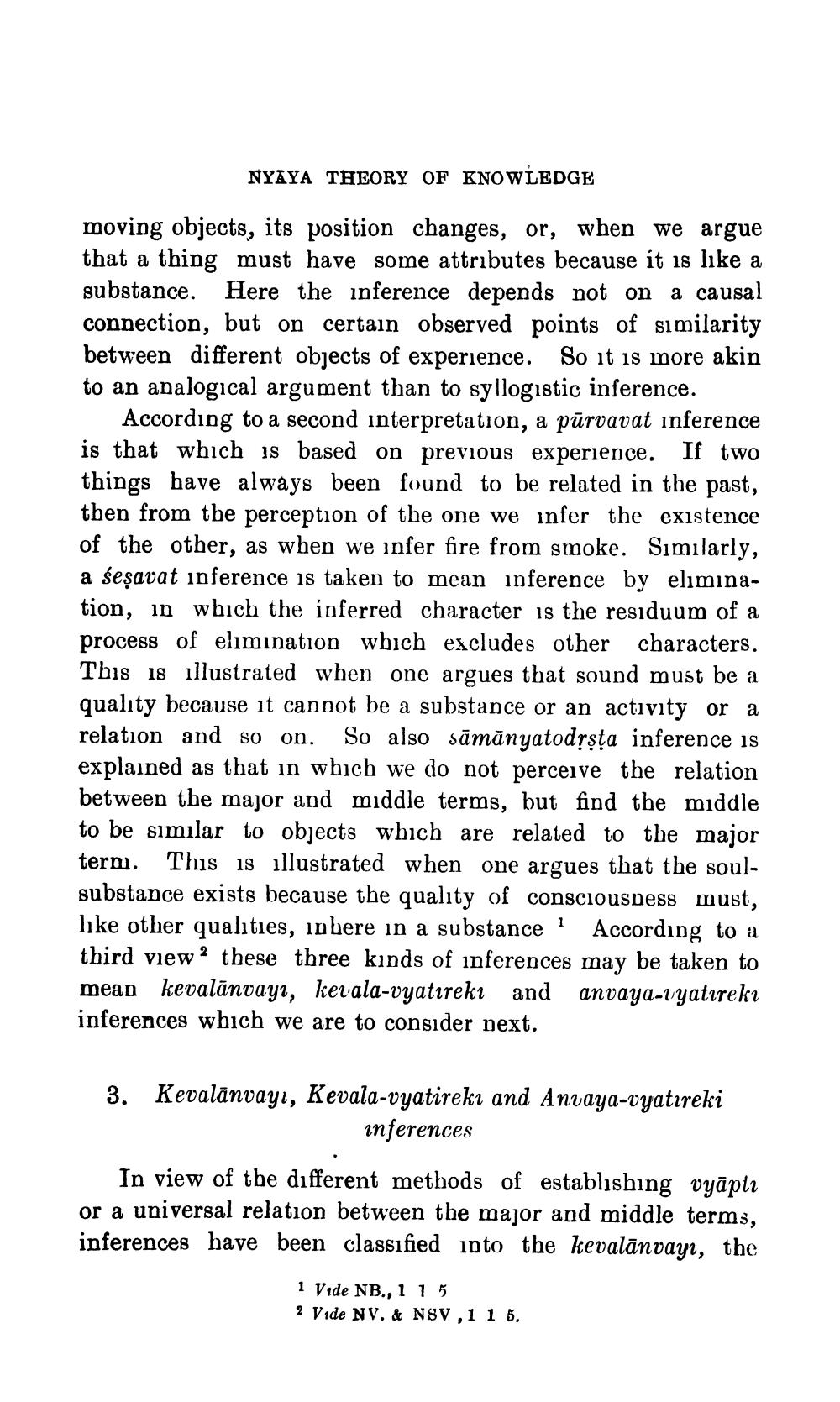________________
NYAYA THEORY OF KNOWLEDGE
moving objects, its position changes, or, when we argue that a thing must have some attributes because it is like a substance. Here the inference depends not on a causal connection, but on certain observed points of similarity between different objects of experience. So it is more akin to an analogical argument than to syllogistic inference.
According to a second interpretation, a pūrvavat inference is that which is based on previous experience. If two things have always been found to be related in the past, then from the perception of the one we infer the existence of the other, as when we infer fire from smoke. Similarly, a śeşavat inference is taken to mean inference by elimination, in which the inferred character is the residuum of a process of elimination which excludes other characters. This is illustrated when one argues that sound must be a quality because it cannot be a substance or an activity or a relation and so on. So also sāmānyatodȚsta inference is explained as that in which we do not perceive the relation between the major and middle terms, but find the middle to be similar to objects which are related to the major tern. This is illustrated when one argues that the soulsubstance exists because the quality of consciousness must, like other qualities, inhere in a substance ? According to a third view? these three kinds of inferences may be taken to mean kevalānvayı, kevala-vyatıreki and anvaya-vyatıreki inferences which we are to consider next.
3. Kevalānvayı, Kevala-vyatireki and Anvaya-vyatıreki
inferences In view of the different methods of establishing vyāptı or a universal relation between the major and middle term3, inferences have been classified into the kevalānvay, the
1 Vide NB., 1 1 5 2 Vide NV. & NSV ,11 5.




